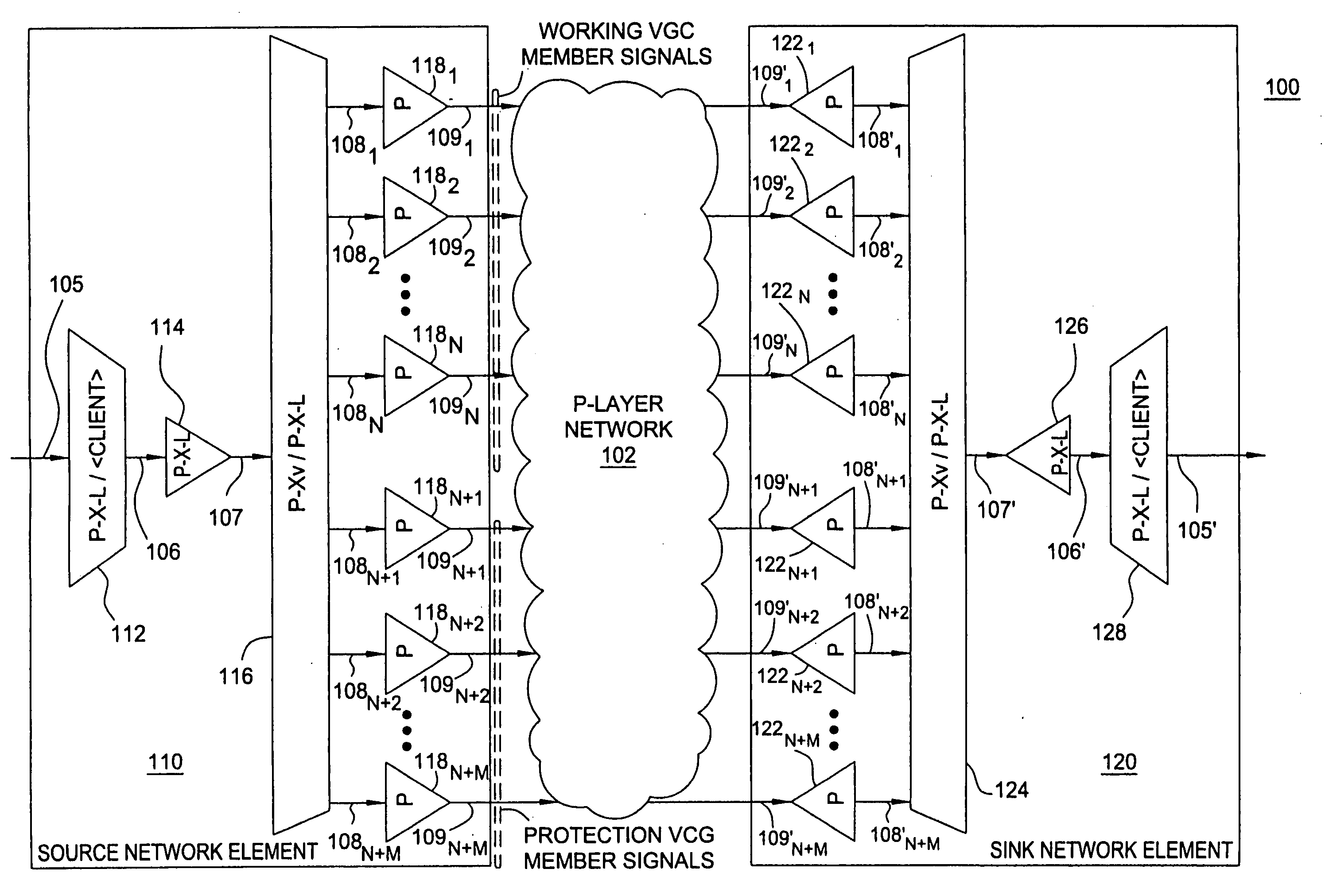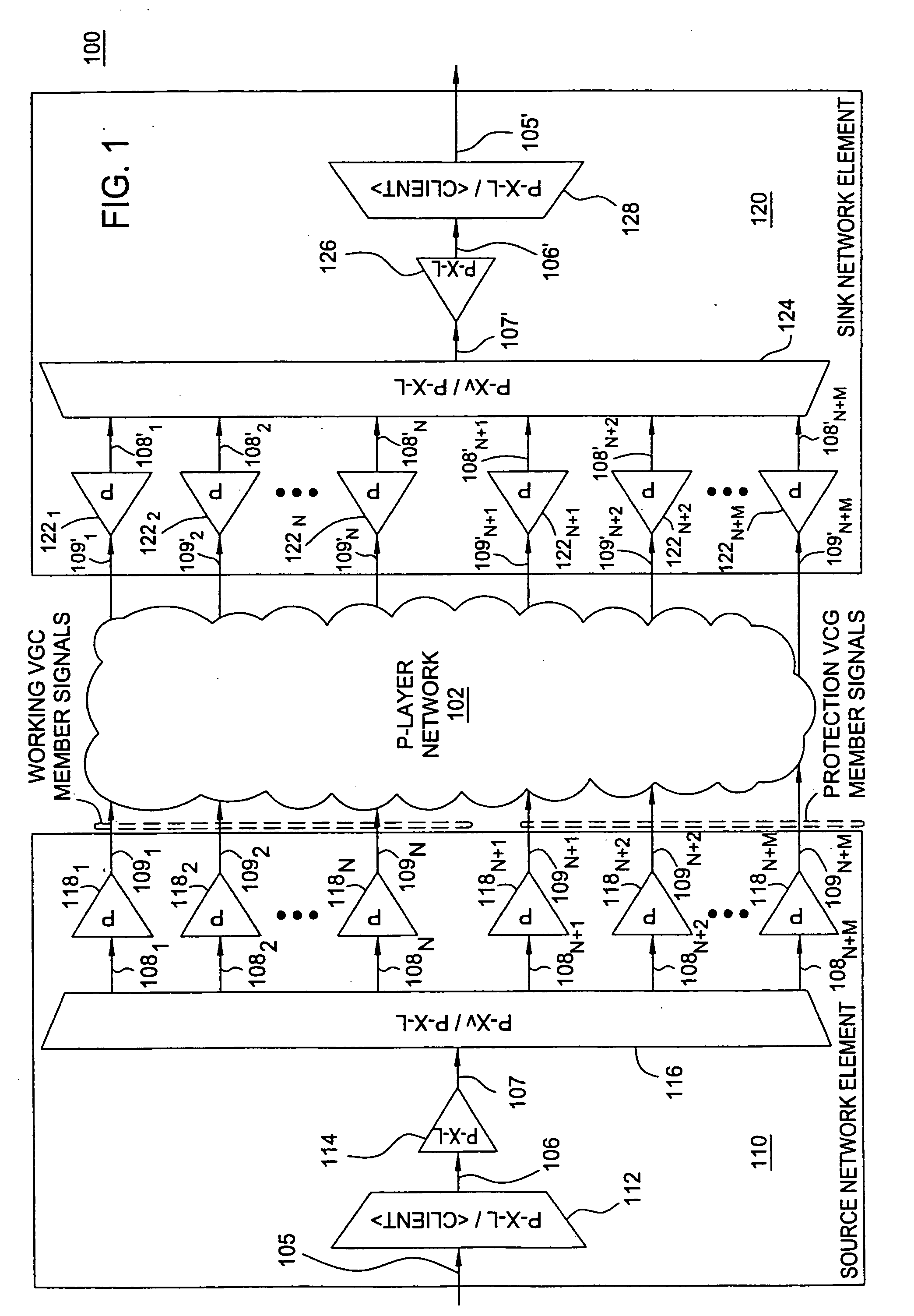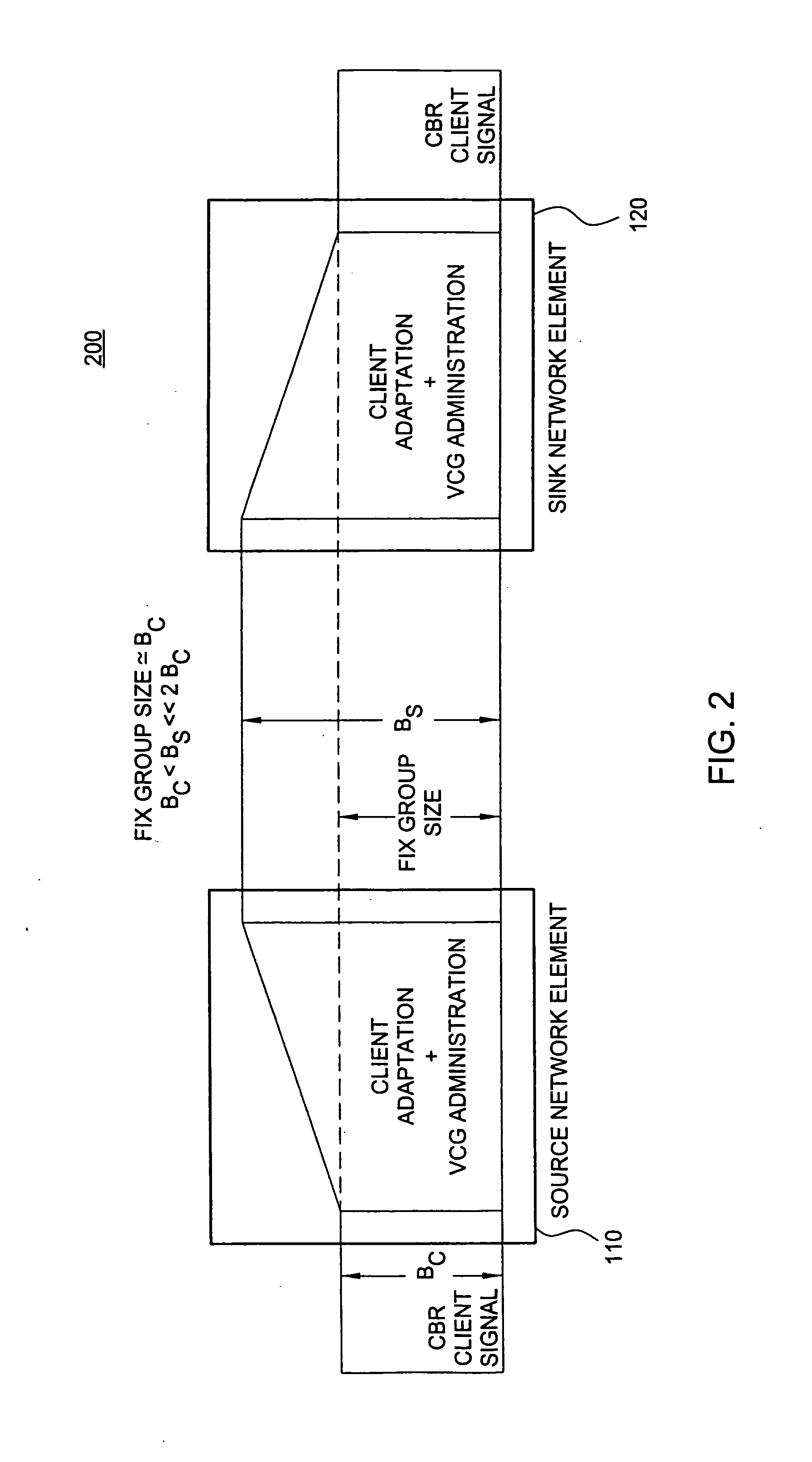Method and apparatus for transporting client signals over transport networks using virtual concatenation
a technology of transport network and client signal, applied in the field of communication network, can solve the problems of vcg failure, vcat/lcas cannot be applied as a resilience mechanism for cbr client signal direct mapping,
- Summary
- Abstract
- Description
- Claims
- Application Information
AI Technical Summary
Benefits of technology
Problems solved by technology
Method used
Image
Examples
Embodiment Construction
[0015]The present invention provides dynamic protection of constant bit rate client signals in transport networks using enhanced virtual concatenation and enhanced link capacity adjustment scheme techniques, thereby enabling constant bit rate client signals to be transported over transport networks with increased reliability. By converting a virtual concatenation group (VCG) signal into a plurality of VCG member signals having an aggregate bandwidth greater than the bandwidth of the VCG signal, the present invention obviates the need for 1+1 protection of VCG member signals in order to adequately protect a constant bit rate client signal transported by the associated VCG signal. Thus, the present invention provides improved bandwidth efficiency over existing solutions using 1+1 protection of VCG member signals.
[0016]FIG. 1 depicts a high-level block diagram of a communication network. The communication network 100 is depicted and described within the context of a generic functional ...
PUM
 Login to View More
Login to View More Abstract
Description
Claims
Application Information
 Login to View More
Login to View More - R&D
- Intellectual Property
- Life Sciences
- Materials
- Tech Scout
- Unparalleled Data Quality
- Higher Quality Content
- 60% Fewer Hallucinations
Browse by: Latest US Patents, China's latest patents, Technical Efficacy Thesaurus, Application Domain, Technology Topic, Popular Technical Reports.
© 2025 PatSnap. All rights reserved.Legal|Privacy policy|Modern Slavery Act Transparency Statement|Sitemap|About US| Contact US: help@patsnap.com



